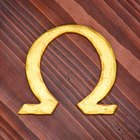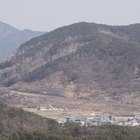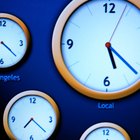
Ondine32/iStock/GettyImages
Keeping in Touch with the Gang Down-Under
Family is family, even if they live in Australia. In fact, keeping in touch is even more essential for kids when loved ones are so far away. It's not very hard to figure out how to dial a number Down Under, but given the time differences, it may be harder to find a time when both your kids and your Australian kin are available.
Pushing all the Right Buttons
You'll have to push all the right buttons to make that phone ring in Australia. If you are calling a land line, you'll dial a total of 14 numbers.
To dial Australia from the United States, first call 011, the number that takes you into international dialing. After that, dial 61, the Australian country code. Then you punch the the last digit of the area code, then the eight-digit phone number.
If you don't know the area code for the city you are calling, look for it on this list:
- Adelaide: 08
- Brisbane: 07
- Canberra: 02
- Darwin: 08
- Hobart: 03
- Melbourne: 03
- Perth: 08
- Sydney: 02
If you can't find it on this list, see the References section. Remember that while the actual area codes are two digits, for long distance calls to a land line, don't dial the 0. For example, to dial a land line in Sydney, dial 011-61-2-(local number).
Dialing a Cell Phone
Now if you are calling a cell phone in Australia instead of a land line, it's a little different. Instead of the area code digit, dial 4. All the rest of the numbers are the same.
For example, if you are calling the grandparents in Sydney and they have a cell phone, you'll dial 011-61-4-(local number.)
Timing Is Everything
Nobody likes to hear the phone ringing in the wee hours of the morning, even for family, so it's critical to get the time zones firmly fixed in your head. This is a bigger project than you may realize.
Australia is a large nation. In fact, it's the sixth largest country on the planet, so it's no surprise it is divided into three separate time zones: Australian Eastern Standard Time (AEST), Australian Central Standard Time (ACST) and Australian Western Standard Time (AWST).
- AEST is equal to Coordinated Universal Time plus 10 hours (UTC +10).
- ACST is equal to Coordinated Universal Time plus 9.5 hours (UTC +9.5).
- AWST is equal to Coordinated Universal Time plus 8 hours (UTC +8).
The United States has nine time zones. They range from Hawaii-Aleutian Standard Time which is UTC -10, to Eastern Standard Time, which is UTC - 4. You will have to work out a mutually compatible time which will depend upon where your family is in the U.S. and where your family lives in Australia.
Daylight Savings Time
Just to make matters more complicated, Daylight Savings Time rules are a little different in Australia—and only parts of Australia apply DST. To be precise, DST is used in New South Wales, Victoria, South Australia, Tasmania and the Australian Capital Territory. It is not observed in Queensland, the Northern Territory or Western Australia.
In Australia, DST starts at 2 a.m. on the first Sunday in October. At that moment, Australians who observe DST move their clocks ahead by one hour. At 2 a.m. (that is 3 a.m. DST) on the first Sunday in April, Australian clocks are set back one hour.
Yes, all this is complicated. But it's possible (and you can always search the internet, of course). For example, if you live in San Francisco, you could call at 3 p.m. PST which would be 8 a.m. the next morning in Sydney. Once you've established a good time to call, you can call at that time every week if you want to.
Related Articles

How to Set a Wristwatch

How to Set the Time on a Casio Wr200m ...

How to Set the Analog Time on a Casio ...

How to Set a Citizen Watch

How to Change to 12 Hour Time on a ...

How to Set for 24-Hour Time on a Timex ...

How to Set a Timex Indiglo

How to Reset a Timex Watch's Perpetual ...

How to Find Someone With Their Old ...

Swiss Military Watch Instructions

How to Set Timex Watches

How to Set the Date & Time on an Omega ...

How do I Find Lost Relatives in South ...

Indiglo 1440 Watch Instructions

How to Change the Time Zone on My ...

Casio Telememo 30 Watch Instructions

Casio 2747 Instructions

How to Operate a Casio Pathfinder Watch

What is the Six Month Rule for ...

Freestyle Predator Watch Instructions
References
Writer Bio
From Alaska to California, from France's Basque Country to Mexico's Pacific Coast, Teo Spengler has dug the soil, planted seeds and helped trees, flowers and veggies thrive. World traveler, professional writer and consummate gardener, Spengler earned a BA from U.C. Santa Cruz, a law degree from Berkeley's Boalt Hall, and an MA and MFA from San Francisco State. She currently divides her life between San Francisco and southwestern France.